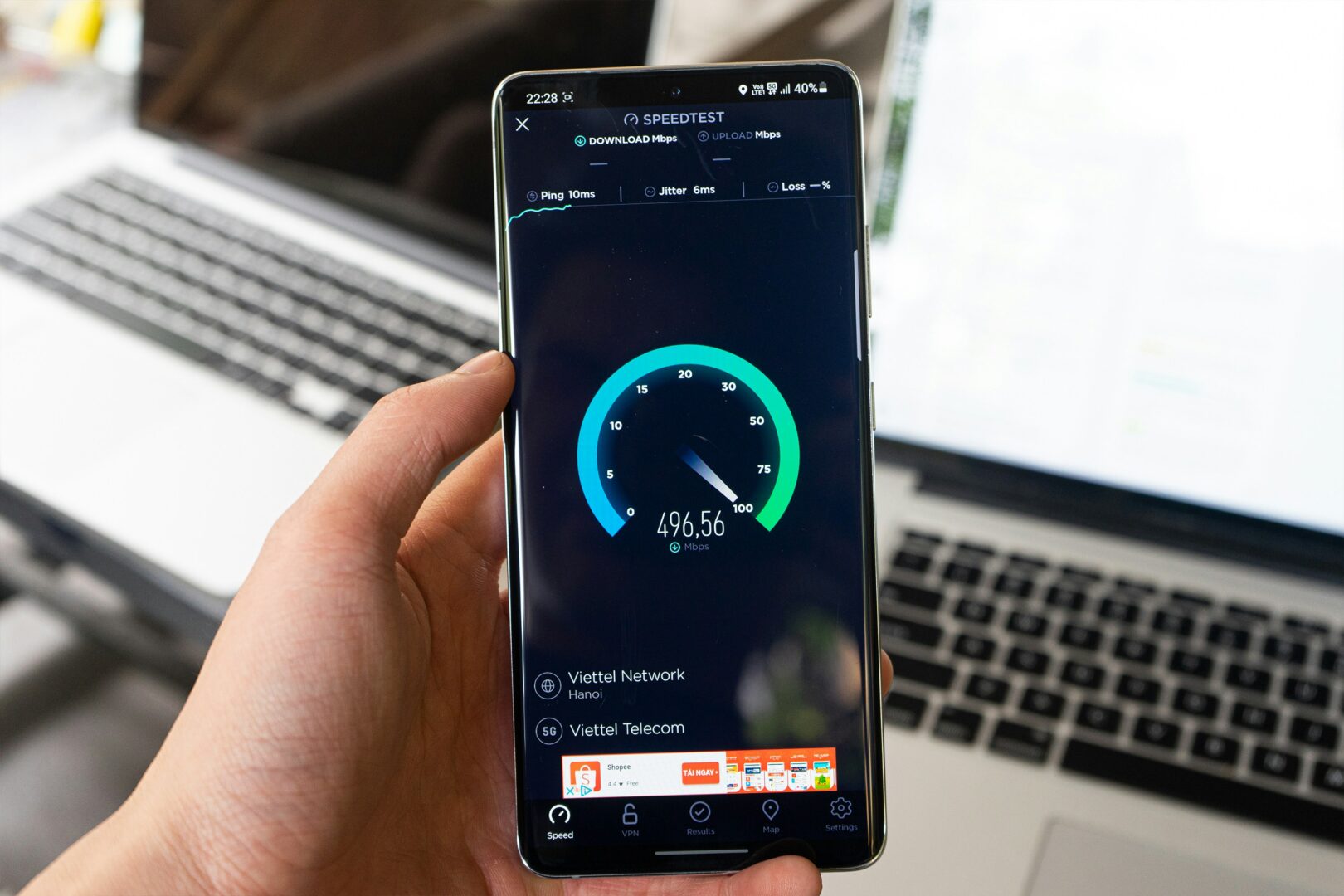The PSTN switch off is set to happen in a few years, meaning that any internet-based devices still connected to a landline will stop working by the end of 2027. If your business is still using traditional broadband, it is recommended to switch to an alternative as soon as possible. One way to keep your business’s digital presence up and running is by using a 5G network.
Lauren Davies of Broadband and VoIP provider bOnline comments: “With our digital infrastructure undergoing more changes than ever, it couldn’t be more important to ensure your company’s own digital infrastructure is up to scratch. Particularly in the case of small businesses and SMEs, things like digital infrastructure often get kicked down the road until it is almost too late. Getting on top of this type of thing and for example, upgrading your internet to 5G is something you will rarely regret.”
How Does 5G Broadband Work?
5G stands for the fifth generation of mobile networks, succeeding 4G. It represents the latest advancement in wireless communication technology and can be used with mobile phones, computers, machines, and any other network-connected devices.
5G offers significantly faster upload and download speeds, and it can connect to a larger number of devices, thereby increasing network capacity. Overall, 5G provides a superior user experience compared to older technologies such as 4G and 3G.
5G technology started to be implemented in the UK in 2019, though its development began in the early 2010s. The emergence of new technology and the proliferation of data-intensive devices like smartphones and tablets necessitated a faster, more efficient network. 5G was created to meet this growing demand and is seen as a solution to connectivity challenges, particularly for the Internet of Things (IoT).
Today, 5G is widely used for various business connectivity solutions, including mobile broadband, which serves as an option for wireless devices not connected to WiFi or MiFi networks.
The fundamental principles of 5G are similar to previous networks like 4G, but it operates using higher frequency radio waves, known as millimetre waves (mmWaves). This allows 5G to transfer data more quickly than networks using lower frequency waves.
For businesses wanting to utilise a 5G mobile connection for employee devices, it’s important to ensure that your mobile business network supports 5G. With typical download speeds ranging from 75-238 Mbps, 5G is the fastest mobile connection available. However, these speeds are only achievable if your business is located in an area with strong 5G coverage.
Additionally, you must ensure that your mobile devices and tablets are compatible with 5G. To verify this, go to ‘network settings’ on your device and check the ‘preferred network type’. If 5G is listed, your device is compatible. Alternatively, you can check the manufacturer’s website for device specifications if you cannot find this information in the device settings.
What Are the Benefits of 5G for Businesses?
There are many reasons why businesses should opt to switch to a 5G network:
Increased Speed and Efficiency
5G offers significantly higher speeds and capacity compared to 4G, facilitating faster operations for connected devices. This can accelerate business processes such as quicker transactions on tablets and stronger mobile internet for employees on the move. In industrial settings, 5G networks can potentially enhance operational productivity of machinery.
Reduced Latency Issues
5G reduces latency, the delay in data transmission, which is crucial for efficient performance of mobile applications. This is particularly beneficial for applications requiring quick response times, such as video conferencing, VoIP calling, instant messaging, and online collaboration tools commonly used in office environments.
Enhanced Connectivity
The high-performance capabilities of 5G enable seamless collaboration with global stakeholders, including employees, suppliers, and partners, with minimal disruptions. This is advantageous for businesses operating on a global scale, accommodating travelling employees needing connectivity abroad, and supporting remote workers.
It ensures more reliable web browsing, enhancing workflow efficiency within office settings.
Improved Reliability
In areas with robust 5G coverage, the technology typically provides a more reliable connection compared to 4G or 3G networks. However, reliability can vary based on regional infrastructure and local conditions. Built-up urban areas may experience occasional connectivity issues despite strong network coverage.
How To Prepare for a Switch to 5G
If you find yourself swayed by the benefits a 5G network can offer your business, it’s vital to properly prepare for the switch. Here’s some steps your business should follow:
Develop a 5G Strategy
Take the time to strategise how 5G technology can address specific business challenges, such as enhancing customer communication. Evaluate your daily operations to identify necessary adjustments for adopting 5G. Consider the potential investments required for this transition.
Assess and Update Infrastructure as Needed
Evaluate your business infrastructure, especially if you operate in complex environments like multiple warehouses. Determine what updates are necessary to enable 5G capabilities, such as warehouse layout adjustments or process redesigns.
Invest in Compatible Devices and Technology
Ensure your business is equipped for 5G by investing in or updating compatible devices, cloud solutions, and implementing necessary security measures. Each business has unique technology requirements, so it’s crucial not to overlook this step to avoid compatibility issues with older devices.
Train Employees on New Technology and Workflows
Provide comprehensive training to your staff on utilising new devices and adapting to revised workflows. For instance, training might focus on using new tablets for order-taking in a café or adjusting to other innovative work methods. This ensures that employees feel confident and proficient in their roles with the new technology.

